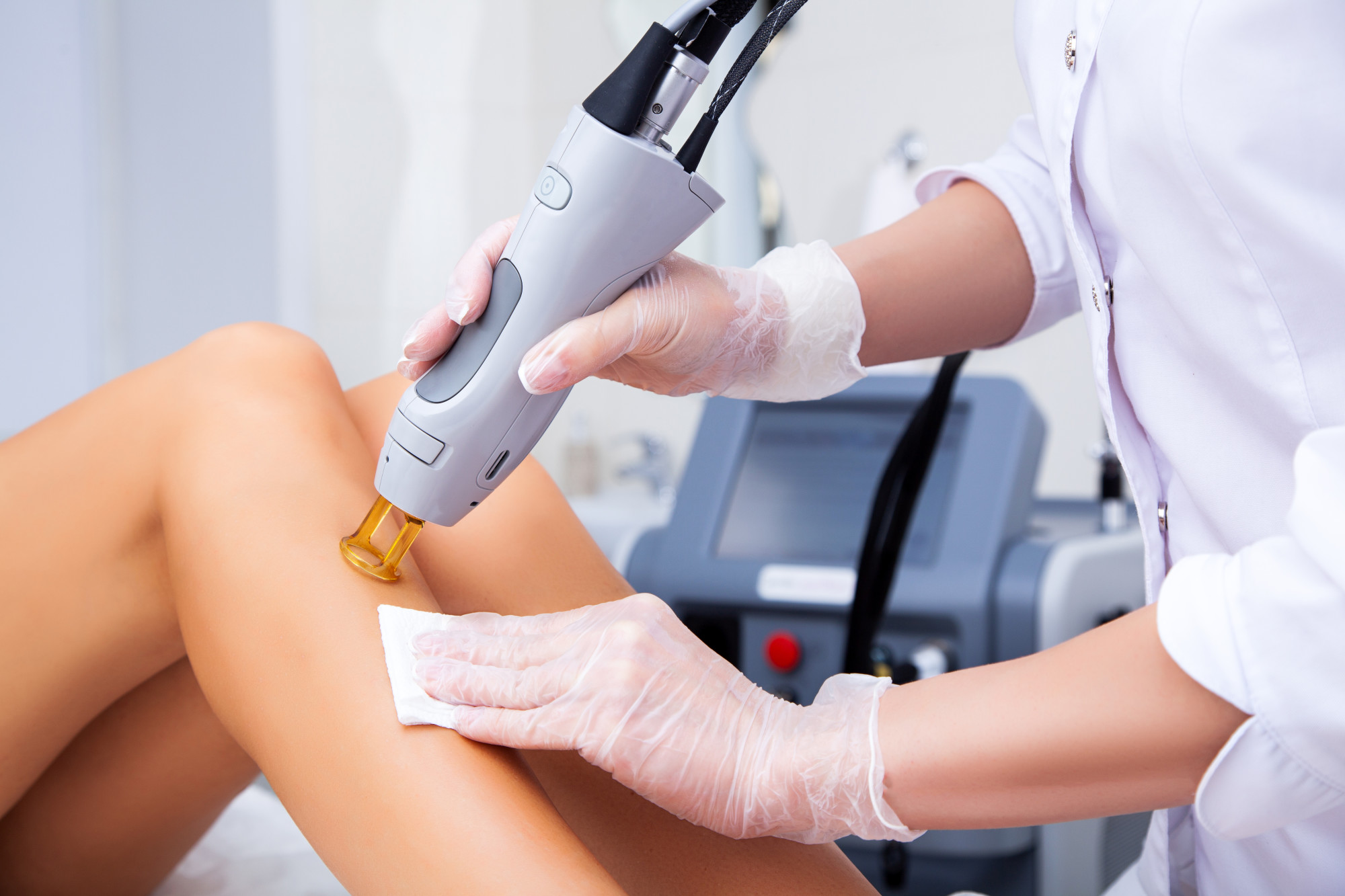Lawrence A. Schiffman, D.O., FAOCD - Board Certified Dermatologist
get connected

As we age, our collagen production starts to slow down. We look at how to stimulate collagen production and maintain your skin's elasticity.

Who hasn't dreamt of having a body free from unwanted hair? Unfortunately, the body with unwanted hair comes at the price of constant shaving and waxing.
If you feel that these hair removal methods are too much for you, you can join the over 2.8 million Americans who know what is laser hair removal and prefer it to other shaving methods.
As a result, laser hair removal is one of the highly done cosmetic procedures expected to continue growing within a short time. Are you ready to bid goodbye to your razors and collection of the creams and oils you use in hair removal?
Read on for a laser hair removal guide and understand why it should be your next investment.
This is the use of a concentrated beam of light known as a laser to eliminate unwanted hair. This laser emits light which is converted to heat and damages the skin follicles that produce hair. The damage of the hair follicles permanently stops hair growth in the area or delays growth for a while.
Although laser hair removal is effective on all skin and hair types, it is most effective on people with dark hair and light skin. For effective laser hair removal, you will need several treatment sessions for about 2-3 months.
You can have the procedure on any part of your body with unwanted hair except the eyelid and the surrounding areas. Additionally, laser hair removal is discouraged for people with tattooed skins.
The main benefit of laser hair removal is that it removes unwanted body hair permanently or semi-permanently. Additionally, when done right, it has minimal to no injury on the skin.
This is unlike other methods of hair removal, which damage the skin due to repeated stress on an area.
Preparing for laser hair removal several weeks before the date the procedure is scheduled increases your chances of excellent results.
Some of the preparations to take are such as finding the right service providers. Research your options and settle for the clinic you feel is best suited and equipped to handle the procedure.
You can determine this by asking them questions during orientation and gauging their preparedness based on the answers they give.
Remember to always take the procedure and laser hair removal advice from a professional and licensed person to avoid future regrets.
Next, prepare your skin for the procedure. Avoid waxing, plucking, and electrolysis at least six weeks before the procedure. Waxing or shaving will cause temporary damage to the hair roots, which are the target in the laser hair removal process.
Avoid sun exposure for at least six weeks before the procedure since sun exposure increases the likelihood of complications and makes the process less effective.
If the hair you intend to eliminate is too long, you can shave it about a day before the procedure. Your doctor will advise on how to do it without damaging the hair roots.
Having the procedure when the skin hair is too long may cause a laser burn. It is also necessary to talk to your doctor before the process to determine that the treatment is right for you.
They can determine this by checking your medical history, especially on skin-related issues.
The procedure followed depends on the type of laser that your doctor is using. Ideally, they will place a cold gel or a cooling device on your skin and then place the laser on the skin.
The gel helps prevent the side effects of the laser on the skin.
After the laser activates, the laser beam passes to the hair follicles and damages them. This causes some discomfort or a cold sensation from the gel.
The time taken on this process depends on the part being treated. A large area may take up to an hour, while a small part takes only a few minutes.
You might feel uncomfortable and have redness and swelling in the first hour after the process. Applying ice to the treated area will help ease the discomfort and swelling.
The doctor might also recommend a steroid cream, especially if you have a skin reaction after or during the procedure.
Avoid any method of hair removal on the treated area. Additionally, avoid exposing your skin to the sun after the treatment. Inform your doctor in case of any discomfort or pain days after the procedure.
Now that you know what is laser hair removal, it is necessary to understand the process's repercussions on you. The main risks involved are skin irritation and pigment changes. As mentioned above, you might have temporary swelling or redness, which causes skin irritation.
Luckily, these signs disappear within a few hours after the procedure.
On the other hand, the procedure might darken or lighten the treated area. This is especially for dark-skinned people or if you fail to avoid the sun after the procedure.
Other common side effects of laser hair removal are changes in skin texture, blistering, scarring and crusting. However, these risks should not scare you away since they are uncommon.
Laser hair removal may cause severe eye damage, so it is discouraged on the eyebrows, eyelids, and surrounding areas.
Don't expect immediate results after the procedure. Instead, the hair will gradually shed over the next days or weeks. How long these results last vary since some may last for several months while others even years.
You will need regular treatment sessions, especially if you expect permanent laser hair removal results.
The average cost of laser hair removal is about $293 per session. However, this varies based on the size of the area being treated, the person performing the procedure, and the number of treatments required.
Have a clear quote of all expenses you will incur before you start the procedure.
If you are fed up with the time-consuming shaving and waxing procedures, it is time to learn what is laser hair removal and shift to it. Although the process is not always permanent, it will save you the torture of frequent shaving and waxing.
If you still have questions on laser hair removal, talk to us, and we shall make the process a walk in the park.

Dermal fillers are on the rise, and an estimated 2.6 million people got this procedure in 2016 compared to 1.8 million people in 2010.
If you have heard of dermal fillers but don't know what they're made of or how it works, you came to the right place.
Read on to learn about the benefits of fillers and how they can improve your appearance.
Derma fillers are a gel-like substance injected into specific areas of the body by a professional healthcare provider. The primary purpose of fillers is to smooth wrinkles, restore volume, enhance the structure of the face, or fill in scars.
Your dermatologist will inject the filler into areas of your skin that have lost volume. Once injected, you can begin to see your skin regain its youthfulness.
Although there are a few different types of fillers, most of them have hyaluronic acid as their main ingredient. Hyaluronic acid is a substance that we can naturally find in our bodies, which binds to water.
Because they're mostly made of hyaluronic acid, most fillers are reversible and will lose their effectiveness over time.
As we mentioned earlier, most fillers are made with hyaluronic acid, but there are a few other formulas dermatologists, and other providers use. These are a few of the most common types of fillers.
The brand name of calcium hydroxyapatite (CH)is Radiesse. CH is a mineral compound found in our bones. Because CH is a biosynthetically produced filler, it's free of animal products or testing.
People with allergies prefer to use CH because it lowers their chances of having an allergic reaction.
Before it was used as a dermal filler, it was commonly used in reconstructive surgery and dentistry.
The most popular uses of CH include enhancing the fullness of the cheeks, nasolabial folds, frown lines, and marionette lines. It can also help add volume in people who have facial wasting due to HIV or those taking certain medications.
As we mentioned before, hyaluronic acid (HA) is one of the most common types of fillers. Several brands, such as Juvederm, Puragen, Captique, Hylaform, and others, use HA.
In the body, you can find high concentrations of HA in the soft connective tissues, joint fluids, cartilage, and the fluid around your eyes.
Not only is it common as a dermal filler, but doctors inject it into the aching joints of those who have arthritis.
HA fillers improve the appearance of acne scars, smoker's lines, marionette lines, crow's feet, and cheek depressions.
The brand name of Polyalkylimide is Aquamid. Aquamid is another biocompatible substance that does not activate allergies and does not require allergy testing.
It's also a transparent substance, and it won't interfere or show up on x-rays. Once the Aquamid gets injected into the skin, collagen will slowly begin to form, filling in the area and adding volume to the skin.
Because a high dose of Aquamid can be injected in a single procedure, plastic surgeons and dermatologists use it to treat facial wasting due to HIV, add volume to thin lips, deeper wrinkles, and slightly modify jawlines and cheekbones.
Also known as its brand name Sculptra, polylactic acid has been used for more than 40 years as a biodegradable suture material. Unlike other fillers that show immediate results, you will have to wait between four to six weeks to see results from Sculptra.
It takes several weeks to see results from Sculptra because rather than filling in the area, it stimulates collagen production.
This fillet is also considered a semi-permanent filler since it stimulates your body's production of collagen. You will need three treatments once a month and occasional touch-ups, but the effects are long-lasting.
If you want to enhance thin lips, deep nasolabial folds, or laugh lines, Sculptra is the best product.
Polymethyl-Methacrylate Microspheres, also known as Bellafill, is another semi-permanent filler recommended to treat medium and deep wrinkles, nasolabial folds, thin lips, and furrows. Dermatologists also use Bellafill on pitted scars in the face.
Bellafill is a top option for those looking for a more permanent filler that doesn't require quite as much touch-up. Like Sculptra, it can take up to three months for people to see results with Bellafill.
The downside to Bellafill is that it can be visible under the skin and create unwanted results. To avoid Bellafill showing under the skin, you must choose a provider familiar with working with this filler.
The proper way to inject Bellafill is using it in junction with tunneling or threading methods.
Although it's a common belief that dermal fillers are primarily used in the face, fillers can serve many different purposes. For the most part, dermatologists and plastic surgeons can use dermal fillers in different parts of the body.
Chest: If your chest has suffered sun damage and has visible wrinkles, fillers can help you improve its appearance. Many providers will use Sculptra to stimulate collagen production and reverse the damage.
Hands: Even if you take care of your face, wear sunscreen and apply filler, your hands can often reveal your age. The signs of aging on your hands include visible veins and tendons and loss of fat.
Any filler that can help with facial wasting can be used on the hands to improve signs of aging.
Under Eyes: Many people suffer from dark circles and hollow under eyes due to aging and lack of sleep. The right filler can help give your under eyes a rested and youthful appearance.
Thighs: An estimated 90% of women and 10% of men suffer from cellulite. Cellulite is a pesky problem for many people and nearly impossible to get rid of. Filler can help improve the appearance of cellulite.
Now that you know about the most common types of dermal fillers and their uses, it's time to talk to your dermatologist or plastic surgeon.
Although facial fillers are not a permanent solution, they can significantly improve the signs of aging around the lips, under eyes, jawline, and even hands and thighs.
Are you in the Miami area looking for a board certified dermatologist? Contact us today to learn more or schedule an appointment.

Comments